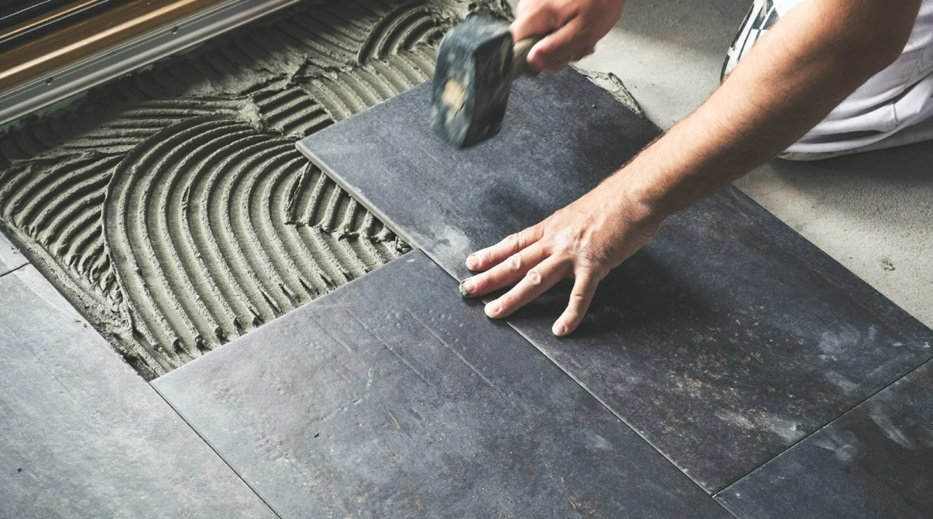Choosing the right tiles for your bathroom can significantly influence both the appearance and functionality of the space. For those considering remodeling their bathrooms in Alpharetta, it’s essential to think about aspects such as durability, water resistance, and maintenance requirements. Delving deeper into these factors will help you make an informed decision that enhances your bathroom’s aesthetic appeal and longevity.
Types of Bathroom Tiles
Ceramic Tiles
Ceramic tiles stand as a favored option for bathroom flooring and walls, prized for their water resistance and robustness. Offering an extensive selection of styles, colors, and patterns, they allow homeowners to effortlessly find an ideal complement to their bathroom decor. Moreover, ceramic tiles boast ease of maintenance and are well-suited to the moist conditions prevalent in bathroom settings.
Porcelain Tiles
Porcelain tiles, a denser and less porous variant of ceramic tiles, stand out as the superior option for areas prone to high moisture, such as bathrooms. Their exceptional resistance to stains and water ensures that they maintain their pristine appearance over an extended period. Additionally, porcelain tiles can beautifully replicate the appearance of natural stone or wood, adding a touch of luxury to any bathroom renovation endeavor.
Natural Stone Tiles
Natural stone tiles, such as marble, granite, or slate, bring a beautiful and unique look to a bathroom. Each stone tile has its own distinct veining and patterns, offering a one-of-a-kind appearance. However, natural stone requires more maintenance compared to ceramic or porcelain tiles. It often needs to be sealed to protect against water and stains, adding to the overall upkeep.
Consider the Room’s Lighting
The importance of lighting in bathroom remodeling can’t be overstated. Proper lighting enhances the room’s ambiance and highlights your chosen tiles’ texture and color. When selecting tiles, consider how natural and artificial light will interact with them. Glossy tiles reflect light well, making small bathrooms appear more spacious, while matte finish tiles reduce glare, providing a more subtle and sophisticated look.
Lighting considerations are crucial when planning the overall design and ensuring that the bathroom looks inviting and harmoniously integrated.
Maintenance and Durability
Another important factor to consider is the maintenance and durability of the tile. Ceramic and porcelain tiles are known for being low-maintenance and long-lasting, making them ideal for bathroom remodels. On the other hand, natural stone, despite its beauty, requires regular sealing and attentive care to prevent damage from moisture and cleaning agents.
Read more about Signs That Your Bathroom Needs A Remodel
Conclusion
Selecting the right tiles for your bathroom involves careful consideration of various factors, including material type, durability, lighting, and maintenance. By understanding these elements, you can make an informed decision that ensures your bathroom renovation is both aesthetically pleasing and functional. These thoughtful choices will contribute to creating a bathroom space that is both inviting and durable, standing the test of time.
Frequently Asked Questions
What is the best type of tile for a bathroom floor?
When considering the best type of tile for a bathroom floor, porcelain tiles are often recommended due to their density, low porosity, and resistance to stains and water. Ceramic tiles are also a good choice and offer a wide variety of design options. For a more luxurious feel, natural stone tiles can be used, but be prepared for additional maintenance requirements.
How often do natural stone tiles need to be sealed?
Natural stone tiles should typically be sealed once a year to maintain their protective barrier against moisture and stains. The exact frequency can depend on the type of stone and the specific conditions of your bathroom. Regular sealing helps to preserve the beauty and integrity of the stone.
Can I mix different types of tiles in my bathroom design?
Yes, mixing different types of tiles can add depth and interest to your bathroom design. For example, you might use porcelain for flooring, opt for tiles, and choose ceramic tiles for the walls. It’s crucial to select tiles that harmonize in color, texture, and style to achieve a unified aesthetic.

 Using Ceiling Panels to Reduce Noise in Shared Office Environments
Using Ceiling Panels to Reduce Noise in Shared Office Environments  Pinery Residences A Sanctuary of Peace in the Heart of Tampines
Pinery Residences A Sanctuary of Peace in the Heart of Tampines  How Realtors Can Sell Homes Faster with Staging
How Realtors Can Sell Homes Faster with Staging  How Often Should a Roof Be Replaced?
How Often Should a Roof Be Replaced?  What to Do During a Pest Control Treatment: Safety Protocols
What to Do During a Pest Control Treatment: Safety Protocols  Segmental Block vs. Poured Concrete Retaining Walls: A Comparison
Segmental Block vs. Poured Concrete Retaining Walls: A Comparison  Narra Residences Unveil Supreme Elegance in Singapore’s Dairy Farm Walk
Narra Residences Unveil Supreme Elegance in Singapore’s Dairy Farm Walk  Emergency Roof Repair in Wyoming: What to Do When Disaster Strikes
Emergency Roof Repair in Wyoming: What to Do When Disaster Strikes  Red Flags to Watch Out for When Choosing a Real Estate Agent
Red Flags to Watch Out for When Choosing a Real Estate Agent 